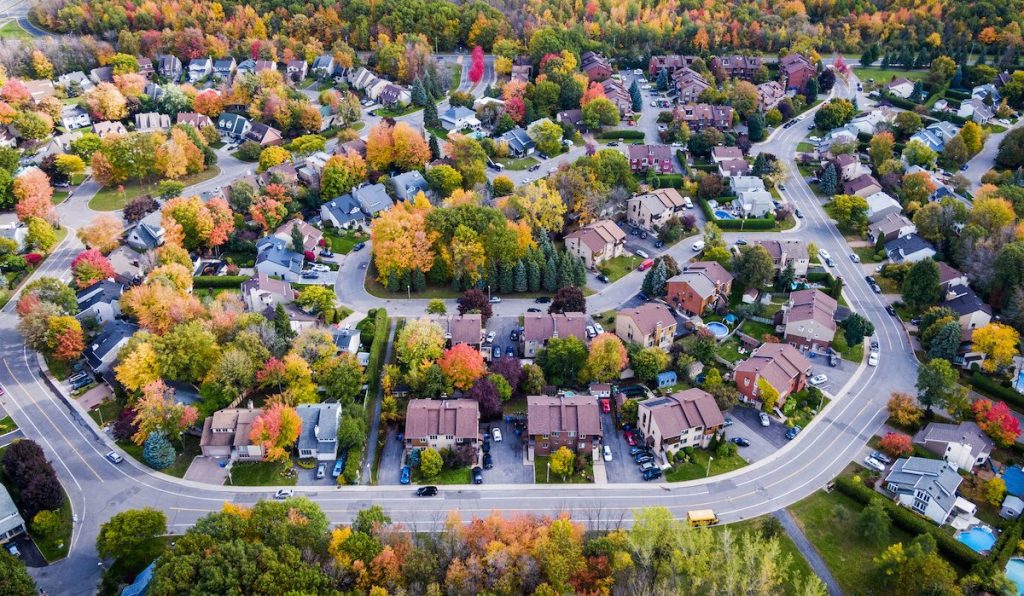Much like the changing of the calendar, buying and selling homes follows a seasonality that those in mortgage and real estate have grown accustomed to. But a recent study from tech startup Haus found that mortgage rates can also be seasonal, and borrowers can benefit from understanding that rhythm.
Analyzing over 8.5 million mortgage originations between 2012 and 2018 from Freddie Mac’s Single-Family Loan-Level dataset, Haus found that the sweet spot for rates is typically in January, when mortgage originations also typically slump.
Ralph McLaughlin, chief economist at Haus, explained the correlation. “So, what do lenders have to do to be competitive? They lower their rates. But let’s look at when Treasury rates were dropping like crazy early in 2020. What that usually means is that mortgage rates would also drop like crazy. But at first, mortgage rates didn’t drop. And it’s because there was such a flood of people looking to refinance that lenders couldn’t keep up.
“They couldn’t keep up with demand and so if they couldn’t keep up with demand that allows them to keep their prices relatively high,” McLaughlin said.
2020 was an outlier, with mortgage rates dropping to record lows on 16 different occasions. However, many economists expect as the economy begins its post-pandemic recovery, rates will also begin to stabilize to a more predictable pattern.
Leveraging eClosings to effectively manage increased loan volumes
With record-low rates and the increased loan volume, lenders must streamline workflows and accelerate time to close. Evolving to full eClosings can help lenders process more loans at a faster pace without overwhelming their resources.
Presented by: SimpleNexus
“We forecast rates to remain relatively low this year as the Federal Reserve keeps interest rates anchored near zero for a longer period of time, if needed until the economy rebounds,” said Sam Khater, Freddie Mac’s chief economist.
If rates stay low, the Haus study estimates that borrowers buying houses between $400,000 and $500,000 are going to reap the greatest reward – averaging a discount of 23 basis points compared to cheaper loans. That’s because it costs the same to originate a loan that is half a million dollars as it does $200,000, but the latter doesn’t involve as much return.
“You’re not making as much as you would on that more expensive mortgage, obviously, in order to cover some of those fixed costs, so lenders actually increase rates on the lower end of mortgage originations.” McLaughlin said.
An updated market outlook from Zillow expects seasonally adjusted home values to increase by 3.7% from December 2020 to March 2021, and by 10.5% through December 2021.
But even if lenders do inflate prices on a lower mortgage, borrowers can gain an advantage by playing the field. Across the largest lenders in the country (the 100 largest by volume of originations), Haus found on average a 75-basis point spread between the most expensive and least expensive lender. Taking into account size of down payment, existing debt and credit score, the study found that for the same borrower, a potential mortgage rate could, for example, average anywhere from 3.25% to 4%.
So how do lenders retain a potential borrower if they can’t match the price? McLaughlin said they are speculating that the convenience and experience borrowers play may be a leading factor. Those lenders who invest in digital technology and digital documentation are going to have the upper hand.
“It’s like, how much are you willing to pay for a hotel? I don’t think there’s a Ritz Carlton of mortgages or a Motel 6 of mortgages, but nonetheless there is variation and even if a rate is cheaper, a lot borrowers are thinking about quality,” McLaughlin said.
Surprisingly, a borrower who lowers their debt to income ratio doesn’t move the needle much on rates. According to the study, borrowers with a DTI below 36% (considered a “good” DTI), on average have mortgage rates that are just 3-6 basis points lower than borrowers with a DTI above 43% (considered “high”).
That said, recent changes implemented by the Consumer Finance Protection Bureau have removed DTI requirements from qualified mortgages. Haus estimates the ongoing impact that DTI will have on mortgage pricing is also likely to fall.





